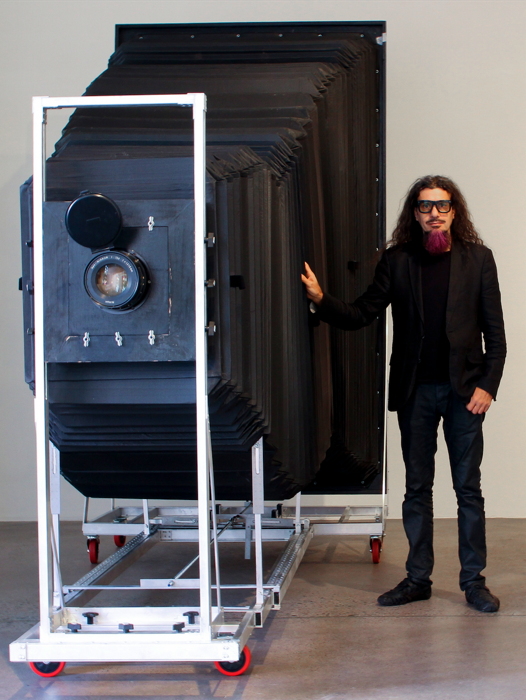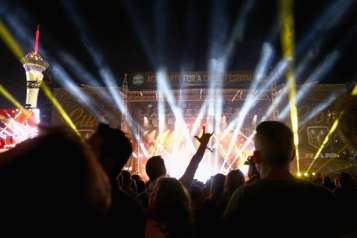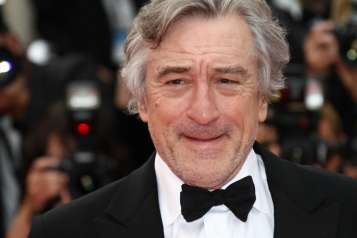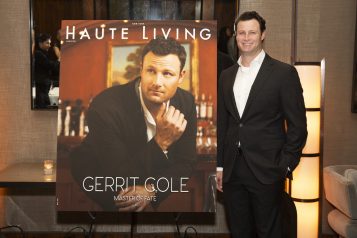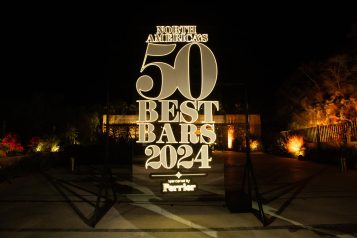Benjamin Genocchio’s statement that any art fair is “a transformative cultural experience – in a good way” matches Art Dubai perfectly, which revives vigorously every March at Madinat Jumeirah. Radiant colour spots in the shape of art fairs, film, literature, and theatre festivals induce a myriad of intense vibes that render Dubai a glamorous haven.
Art Dubai is not only an outstanding globalized reference point, but also the inspirational cradle of modern and contemporary art that joins the Middle East, North Africa, Central and South Asia sheltering an impressive artwork collection of more than 3,000 paintings, prints, soft sculptures, textiles and photographs. Since its first edition, the fair has successively acquired new dimensions that hallmarked it as an international art fair. Art Dubai has also broadened the existing culture by propelling budding artists and notable masters, supporting collectors, regional and global artists or welcoming international collectors and curators who embedded this cultural event with a new perspective and a fresh breadth. The current market, set up through the joint efforts of local galleries, collectors and emerging artists, is particularly impressive because of its unsaturated potential as compared to other European or American art markets. This year pointed out a fast growth in the local landscape as great names like the Emirati artist Hassan Sharif, the Qatari-American artist and writer Sophia Al Maria, Wael Shawky, winner of the Abraaj Group Art Prize Basim Magdy, the Deutsche Bank Artist of the Year exhibited within Art Dubai beside new rising galleries and artists.

Art Dubai Contemporary, the most diversified program, featured this year 76 galleries from 36 countries, including an inspired selection of European and North American galleries including Blain / Southern (London), Marianne Boesky Gallery (New York), Travesia Cuatro (Madrid), Carlier / Gebauer (Berlin), Galleria Franco Noero (Torino), Galerie Iragui (Moscow). Moreover, Indian galleries like Chatterjee & Lal (Mumbai), Chemould Prescott Road (Mumbai), Experimenter (Kolkata), Jhaveri Contemporary (Mumbai), Gallery SKE (New Delhi / Bangalore) or Turkish ones Rampa, X-ist, Sanatorium and Galeri Zilberman strengthened the fair’s role as a notable place for regional art market. Some of the participants exhibited solo or two-person shows, including Carroll / Fletcher (London), Silverlens (Manila) with Maria Taniguchi; Galeria Marta Cervera (Madrid) with Raha Raissnia and David Diao whereas others like Upstream Gallery (Amsterdam) analyzed the blend of light and colour in Frank Ammerlaan and Rafaël Rozendaal’s works. This year’s novelty was the mixed-media exhibition presented by Atassi Foundation for Art and Culture and curated by the prestigious film director Hala Alabdalla. Among the most emblematic names in the region were: The Third Line Gallery and Green Art Gallery exposing works of Middle Eastern artists, Albareh Art Gallery promoting not only contemporary art from the Middle East, and new talents, but also curating innovative approaches, Galerie El Marsaaims sustaining Arab artists whose works vibrated of emotion.
Art Dubai Modern included solo or two-person exhibitions featuring 20th century modern art from the Middle East, Africa and South Asia. Art Dubai Modern consisted of 13 galleries from 9 countries and its exclusive partner was Mashreq Private Banking. This gallery program indicated a boost of the market and deep interest in modern regional works. Viewers could admire the works of well-known masters including Yahia Turki (Turkey), Abdur Rahman Chughtai and Syed Sadequain (Pakistan). Female artists were represented by galleries Janine Rubeiz (Beirut), Lawrie Shabibi (Dubai). Other galleries illustrated the 1940 – 1980 period exhibiting works of Lebanese masters Hussein Madi, Alfred Basbous, abstract painters Samia Halaby and Moustafa Fathi, Nadim Karam and Faisal Samra (Ayyam Gallery).

Art Dubai Marker emphasized the fair’s importance as a spotlight tackling thematic or geographical subjects related to the Gulf and the Arab world. This year’s program promoted the Philippines as curator Ringo Bunoan’s intention was to propel those artists who “create works that go against institutional and commercial expectations”. Drawing attention on the lively art scene in Manila, Art Dubai Maker comprised modern and contemporary artists as well as artist-run spaces conceived to enlarge the cultural exchange where local upcoming artists could conceive and display in unconventional media.
Art Dubai Projects showcased eight projects through Artists-in-Residence, and Art Dubai Commissions with its mesmerizing “The Wedding Project” based on an eleven-course menu. Exploring the theme, “The Future Was”, the 10th edition of the Global Art Forum program included a series of 32 live talks, panels and performances, inviting over 50 international and regional leading world thinkers to discuss how the future has been imagined and shaped.

Extravagant, glorious with each cultural event held here, Dubai is gradually becoming a solid platform for emerging and established artists, a resplendent city nurturing art, and enhancing innovation and creativity, a benchmark for art lovers all around the world.Patronized by HH Sheikh Mohammed bin Rashid Al Maktoum, Vice President and Prime Minister of the UAE and Ruler of Dubai, Art Dubai partners with The Abraaj Group, The Dubai Culture and Arts Authority, Dubai Design District (d3) being sponsored by Julius Baer and Piaget.
“For me, life and art is the same. It is the throbbing of the heart, and the most important thing is that the pulse is even. Inhale – exhale, some eighty expansions and compressions a minute, and between them, a plateau. The limited exhibition space provides a very good opportunity to show this rhythm of silence and talk, big and small, old and new.” (Nikita Alexeev, Galerie Iragui)
It’s the mysterious confession of an esoteric, yet simple and sagacious man, one of the most eloquent and authentic Russian artists, emblematic for the “Moscow Conceptualism” with great affinities in contemporary art, poetry, visual arts, music, conceptualism and minimalism. Though a controversial artist, Nikita Alexeev (b. 1953) is the most coherent and visionary conceptualist, that writer and critic who remolded painting in an original brushstroke pattern. He first studied at the Moscow Institute of Graphic Arts, continued with the “Revolution of 1905” Art School and the Printing Institute from 1973 to 1976. In 1972, he graduated from Moscow Art College and received further training at the Department of Artistic and Technical Design of Printed Matter of Moscow Polygraphic Institute. The 1970 – 1980 was a period of creative effervescence for Nikita Alexeev, a central figure of informal Moscow art, and initiator of Collective Actions Group (1975-1980) together with Andrey Monastyrsky, Nikolay Panitkov, and Lev Rubinshtein in their attempt to surpass the bounds of conventional connotations by exploring the techniques of arousing the senses. Nikita Alexeev’s talent is to have pushed art towards a new dimension by introspecting “the gap between the signifying and the signified” resorting to an exquisite language which associates text and image in a tumult of sensitivity and rationality wrapping lyricism and delicate emotions in bitter irony. He is also the creator of an outstanding AptArt gallery exhibited in his own home which refined his style and the language of painting as “not only a way to express certain ideas, some structured phonemes, but a way of thinking”. It was during this period that Nikita Alexeev dedicated himself to graphics, objects and paintings testing various materials. Graphics and painting became the artist’s creative instruments matching perfectly his artistic temper.
Getting international recognition and an impressive participation in many historical exhibitions, Nikita Alexeev’s works are exposed worldwide in the State Tretyakov gallery, and Museum of Modern Art (Moscow), State Russian Museum (St. Petersburg), Kupferstichkabinett (Berlin), the State University of New Jersey, Fondo Sandretti del ’900 russo, Rovereto (Italy), etc. In 1985-1987, he joined the “Central Russian Elevation” interpreting “simulation rock”, then after having lived in France for a few years, he returned to Moscow in 1993, and became an editor within the cultural department of the weekly “Inostranetz” (“The foreigner”), then a book illustrator and designer for Moscow publishing houses.
When visual and verbal images dispel equally strong impressions, the artist is definitely endowed with craftsmanship and literary gift. It is Nikita Alexeev’s case whose artistic journey describes art as an ongoing process in a diversity of genres. The material representations of this concept are his simple and satirical “Death Drawings”, his paintings “Landscapes in Three Languages, Disappearing Landscapes and Tablecloths in the Wind” that convey a feeling of “misunderstanding/understanding”, “The Mediterranean Questions and Answers”, short stories about the world’s weirdness. Words and images interweave into a harmonious unity like Yin and Yang, wrapped in yellow, green and blue, the immanent colours of this paradise land.







